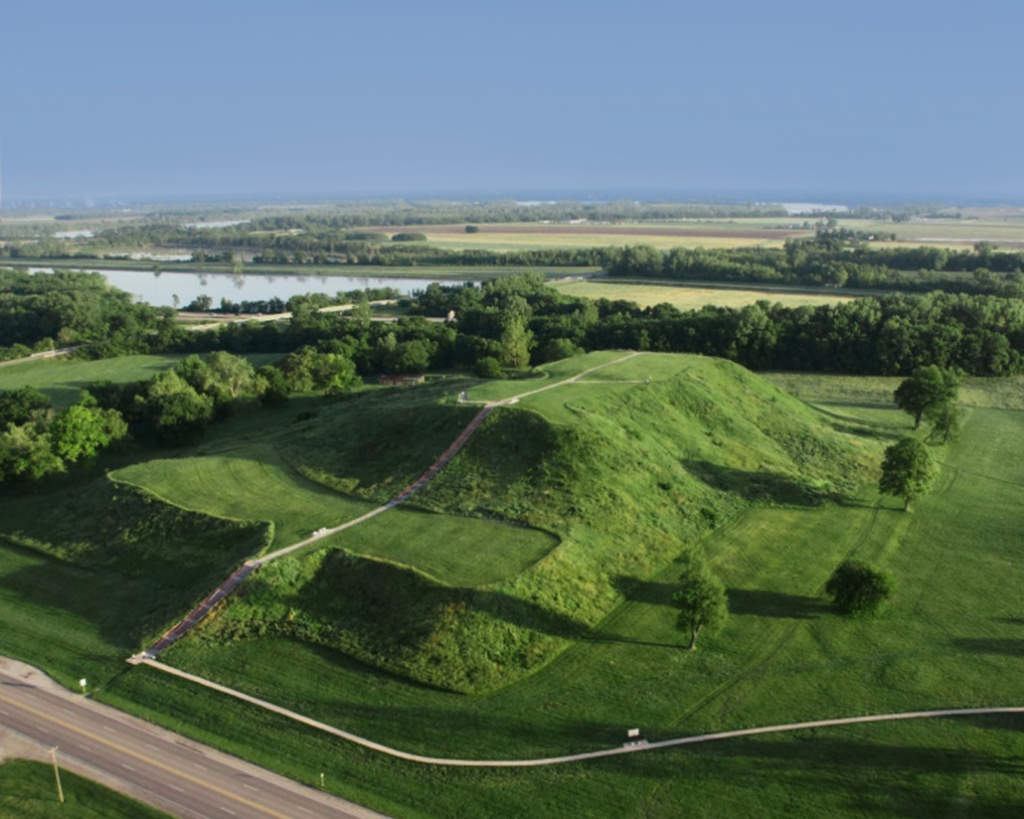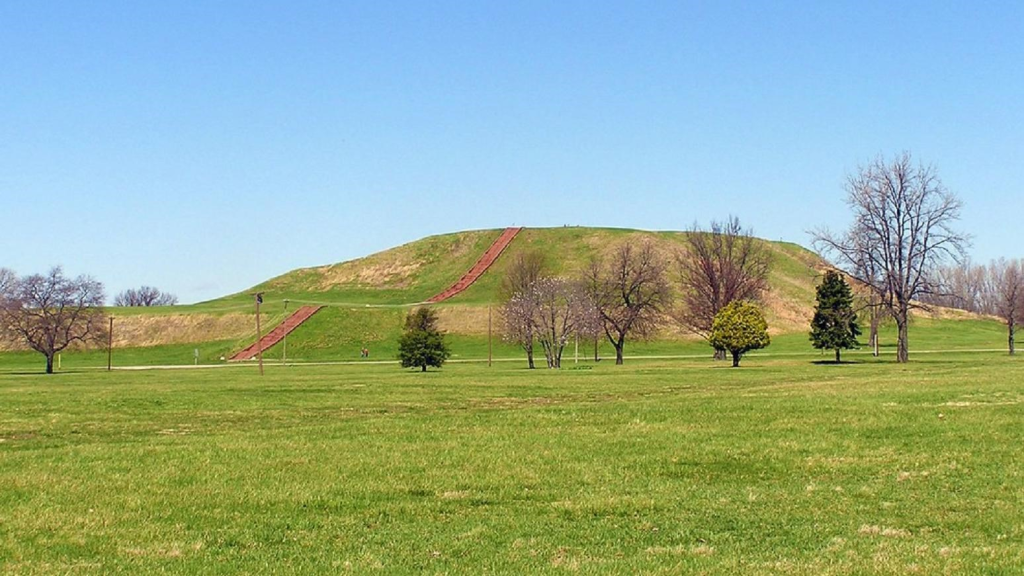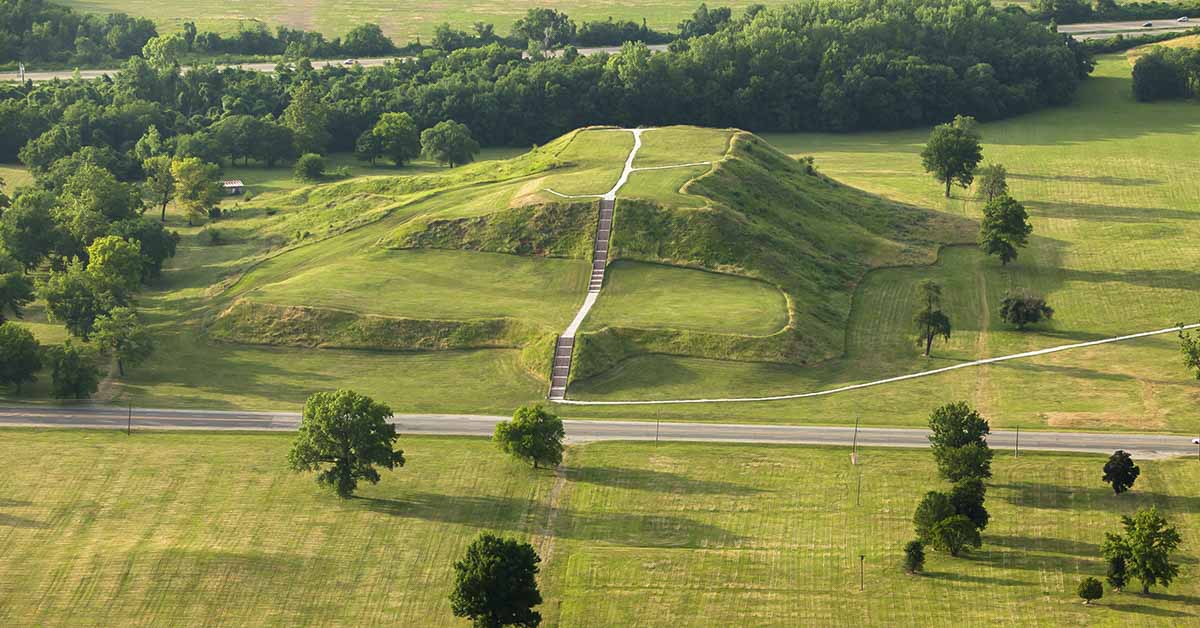Located just a river crossing away from St. Louis, Missouri, lies an ancient and enigmatic anthropological site that remains little known to most Americans. Cahokia, a sprawling settlement that may have accommodated up to 20,000 inhabitants by 1050 A.D. Remaining covered in mystery, it still leaves scholars debating the possible reasons for its demise. The metropolis in the rich floodplain of the Mississippi River Valley in western Illinois was built of huge earthen mounds built by man and is still visible today at the Cahokia Mounds State Historic Site.
The Cahokia Mounds remain a mystery to most
While much about this ancient civilization remains unclear, there are clues that suggest that Cahokia was home to a diverse group of Indigenous peoples. Analysis of teeth found at the site indicates that roughly a third of the population migrated to Cahokia from other regions of middle America. This was based on the varying strontium levels in the dental fragments.
The layout of the mounds in Cahokia also suggests that the city had some level of urban planning and was not simply a collection of villages. Rulers resided atop the mounds, towering over the structures lived in by other residents. Agriculture, hunting, logging, pottery, and weaving all occurred in the vast city. At the heart of Cahokia, surrounding the tallest mound that stands at roughly 100 feet, was the city center. This city center is protected by a large wooden palisade.

Read: Ancient Maya City Has Been Discovered Under The Guatemala Rainforest In Now ‘Inhospitable’ Area
Religious ceremonies were likely performed at the Cahokia Mounds
The area contained a plaza that archeologists believe was inspired by the creators’ concept of the cosmos at the time, with the four corners marking the cardinal directions. Researchers believe that this town center and the structures atop the central mound were used for religious ceremonies and events. It’s even possible that people came from outside Cahokia to attend them.
Despite numerous theories about why Cahokia ultimately fell, there remains conflicting evidence regarding its demise. Some experts believed that the residents’ reliance on wood for their structures led to the over-deforestation of the land. This, over time, made it less fertile.

However, soil samples show that the land would have remained fertile for some time after the fall of Cahokia. Disease, which was not brought to the region by colonists until much later, is the least likely explanation. Other scholars speculate that conflicts with neighboring groups may have contributed to the city’s collapse.
Today, the mounds of Cahokia comprise a city park and state historic site, with consideration for national park status. Visitors can climb the steps of the tallest mound still standing among the over 65 preserved mounds. This makes it one of the few places in the United States where people can freely explore a city over a millennium old.
Our responsibility to protect ancient land
The State of Illinois owns the property and has designated it as a State Historic Site, focusing on preserving and interpreting its history for the public. The site has been protected since 1925 and is actively safeguarded to this day by state law and regulation. The Illinois Historic Preservation Agency manages the property and has developed a Master Management Plan (updated in 2008) to guide its protection, preservation, interpretation, restoration, and research.
Professional staff is provided by the State to manage and interpret the site for visitors. There is a staffed interpretive center that opened in 1989. To address potential threats like erosion, development, flooding, and damage to archaeological features, the Master Management Plan includes a long-term monitoring program. You can learn more about the Cahokia Mounds here.
Keep Reading: Ancient Bronze Age Couple Found in Loving Embrace 3000 Years After Burial
Sources
- “The biggest ancient city you’ve probably never heard of is in Illinois.” Popular Science. Margo Milanowski. November 1, 2021
- “Cahokia Mounds State Historic Site.” UNESCO

